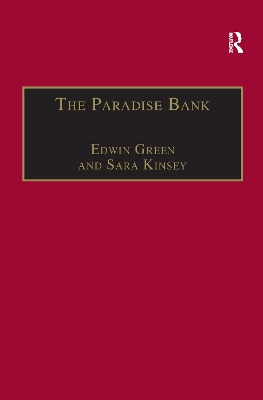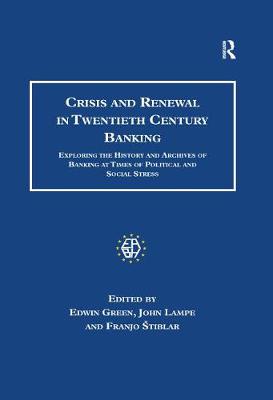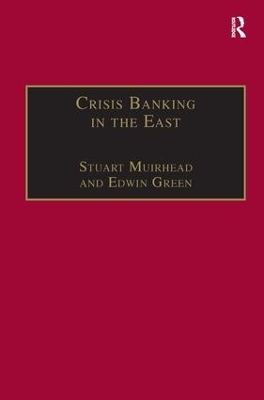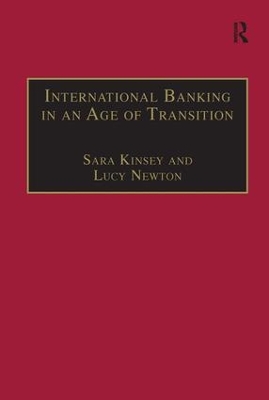Studies in Banking and Financial History
4 total works
The Mercantile Bank of India was one of a small band of British-managed banks which dominated Anglo-Eastern finance for most of the 20th century. Founded in London in 1893, the Mercantile inherited the business, branches, staff and even the distinctive cable address - Paradise, London - of its forerunner the Chartered Mercantile Bank of India, London and China. In the early 1900s the Mercantile Bank re-established a strong and quietly successful business in the East. After the First World War the Mercantile played a prominent part in banking development in Malaya. In addition to maintaining its support for the trade of the Indian sub-continent, the bank also enjoyed success in Shanghai. Like its major rivals, the Hongkong Bank, Chartered Bank and the National Bank of India, the Mercantile Bank suffered grievously during the Second World War. In the post-war world it needed both to adapt to massive political change throughout the East and to diversify into new markets and new types of business. In 1959 the Mercantile became a subsidiary of the Hongkong Bank and this book explores the complex, high-level negotiations in London and the East which preceded the acquisition. Although the Mercantile Bank was fully absorbed in 1984 by the Hongkong Bank (now part of the HSBC Group), its history, business and personnel remained an important thread in the traditions of the enlarged group. This history deploys the extensive and colourful archives of the Mercantile Bank, together with the memoirs of former officials and their families. The book is plentifully illustrated from the photograph collections of the Mercantile Bank and former members of its staff.
Crisis and Renewal in Twentieth Century Banking explores the behaviour of banks at times of war, revolution, civil war, social turmoil, and reconstruction. Analysing the history and archives of banks, it discovers examples of how banking is affected by political and social upheavals; how banks may influence the outcome of such events; how banking has recovered from periods of intense political and social stress; and how the archives of banks provide remarkable testimony to events in the wider world. By examining the setting of different banking markets in the last century, up to and including the transformation of Eastern and South Eastern Europe in the 1990s, this book marks a new direction for international discussion and research. Contributors include senior historians and archivists from Europe and the United States. Contributions include papers on Russia and foreign banks, 1917-30; depression and crisis in Central Europe in the 1930s; Civil War in Spain; post-war reconstruction in banking in Germany and the Far East; and crisis and renewal in South East Europe. The papers published in this collection were first presented at the twelfth Annual Conference of the European Association for Banking History, held in Ljubljana, Slovenia, in May 2001, and hosted by the Bank of Slovenia and the Nova Ljubljanska Banka.
The Chartered Mercantile Bank is one of the constituent banks of the huge Hongkong and Shanghai bank. This study charts its first 40 years as one of the pioneering banks of the Far East. The Chartered Mercantile became the leading exchange bank in India and South East Asia whilst always retaining its head office in the pivotal London market. Based upon meticulous research using a particularly rich set of banking archives, the book describes the complex political and financial circumstances on the subcontinent during the bank's early years and introduces the personalities in the Indian business and London banking worlds who guided the infant institution. The volatility of local markets is analysed, with portraits of the banks and merchant houses which did not survive the many financial crises in the East also included. This book will do much to remedy the lack of existing research into international finance, and Eastern banking in particular, in the 19th century. It provides an inside view of the workings of an Eastern bank - the nature of its business, methods of payment and exchange, recruitment and career patterns of staff, and includes valuable new material on the role of European bankers in an eastern setting.
Sweeping changes have taken place in the financial sector during the twentieth century. Two of the most notable changes have been the growth of global markets and institutions, and the introduction of computerisation. This volume charts the course of concentration and internationalisation in banking and also examines the influence and implications of new technologies on the industry’s record-keeping practices. The exploration of concentration and internationalisation begins in the late nineteenth century and examines the effect of a wide range of factors, from macro-economic influences such as the liquidity crisis of the 1930s and the oil price rises of the 1970s, to the role of national regulation in the creation of financial markets and innovative products. The role of individual banks and their particular policies is also brought into focus. Some of Europe’s most eminent bankers provide a contemporary dimension by discussing possible future developments in continental banking.



